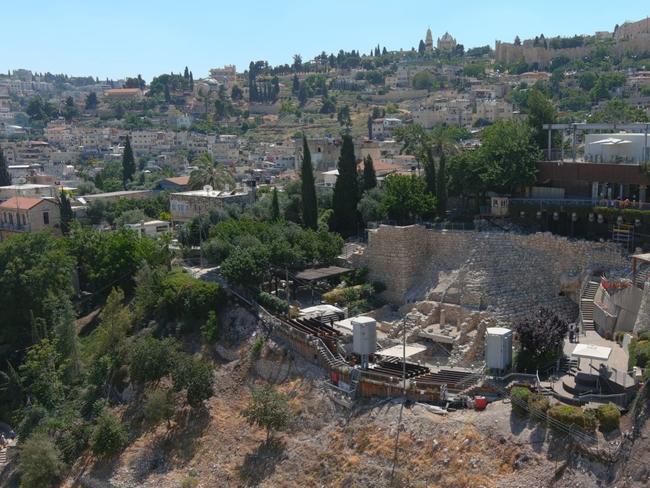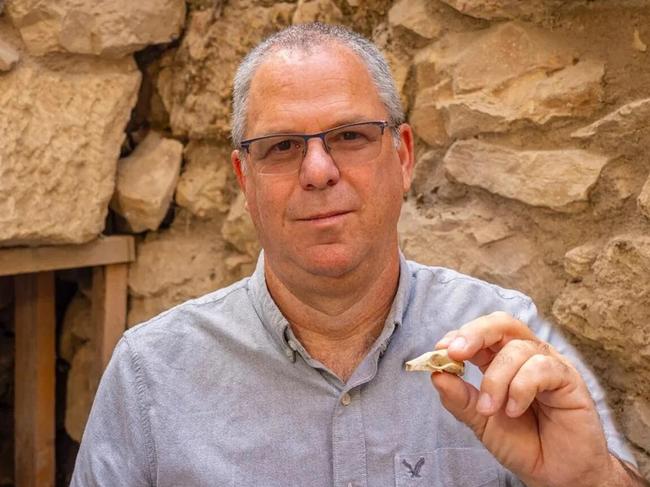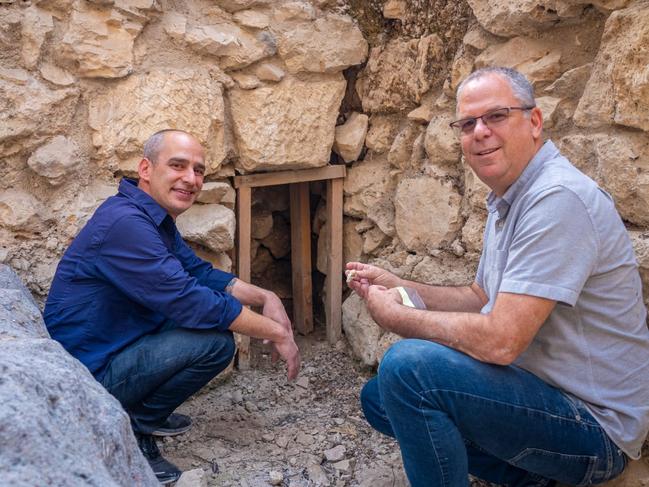New findings address ‘highly controversial and intriguing issues’ surrounding Jerusalem’s place in history
As technology advances, new clues are helping separate history from some of the most widely-told stories.

Archaeology
Don't miss out on the headlines from Archaeology. Followed categories will be added to My News.
Did the biblical King David and King Solomon exist? Was Jerusalem really the shining city on a hill the tales talk of? New clues are helping separate history from the well-known stories.
The story goes that the young shepherd David won the favour of Israel’s first king – Saul – by killing the giant Philistine warrior Goliath with a simple sling and stone.
Later, after being anointed king by all the tribes of Israel, he conquered Jerusalem and made it the capital of his newly unified nation.
To cement its status, he brought the Ark of the Covenant, holding the Ten Commandments, to the city – but was prevented from building a temple to house it. This honour was left to his son, King Solomon.
It’s an account found in the Hebrew Bible’s Books of Samuel.
Very little evidence exists supporting the reigns of David and Solomon in the early days of the Iron Age United Kingdom of Israel outside the Jewish texts.
And much of what has been presented in recent decades has been discredited as sophisticated forgeries.
It’s a similar story for the city of Jerusalem itself.
Despite the biblical accounts and a few mentions in the records of surrounding empires, little has been found to prove its Iron Age capital status. But a new study presents evidence suggesting it was more than the tribal village many archaeologists believe it to have been.
Shadows of a Dark Age
A decade of excavations in the City of David National Park has recovered 103 samples of organic matter – such as charred date pits, grape seeds and a bat skeleton – from carefully recorded locations within four dig sites.
And new carbon-dating techniques have pushed back the boundaries of the technology, enabling Tel Aviv University, the Israel Antiquities Authority, and the Weizmann Institute of Science to pinpoint dates older than ever before.
The new findings address “highly controversial and intriguing issues in the city’s early history… assembling an absolute and high-resolution chronology covering a substantial part of the Iron Age and the time of some of the most consequential events in the city’s emergence as the capital of a regional kingdom and early state society,” the study’s authors state.

This includes one of the first known mentions of Jerusalem in ancient texts.
Among the tablets recovered from the Amarna archives of Egypt’s “heretic” Pharaoh Akhenaten (1353-1336BC) are letters from Canaanite king Abdi-Heba of Jerusalem. He begs Akhenaten for military protection against nearby warring city-states.
Jerusalem’s fate after the Bronze Age Collapse (about 1177BC, when the world’s first international diplomatic and trade network disintegrated into a Dark Age) is lost among the migrations and wars of that confused period.
Very little evidence of the following 200 years has been excavated in Jerusalem itself. However, the 10th Century BC is widely accepted as the era in which David and Solomon would have made the city the capital of their “Promised Land”.
But about 20 per cent of the 103 organic samples recovered during the excavations reportedly dated from between the 12th and 10th centuries BC.
“This clearly indicates widespread occupation of a yet undetermined character,” the researchers write.

Age of kings
“During the 10th century BCE, the days of David and Solomon, this research has shown that the city is occupied in different areas and seems to have been larger than we thought previously,” states Israel Antiquities Authority archaeologist De Joe Uziel.
“We can pinpoint specific buildings and relate them to specific kings mentioned in the biblical text such as Uzziah, Hezekiah, Menashe and others.”
Established thinking places much of Jerusalem’s growth after its fall to the Assyrians in 701BC, when the invading army forcibly resettled part of the population of Judah elsewhere in their empire.
Refugees from the northern Kingdom of Israel are generally believed to have assembled in Jerusalem, giving the capital a new lease on life. But the study says the new carbon-14 dates suggest a significant expansion of the city happened as early as the era associated with the reigns of King David and Solomon.
“If my pendulum has to move somewhere, it now goes more in the direction of the city than the village because of these results,” Tel Aviv University professor Yuval Gadot told local media.

The excavations identified walls and structures first built in the 9th century BC, which continued in use until 586BC when the Babylonians destroyed the Kingdom of Judah, burned Jerusalem and destroyed the First Temple.
“The new findings strengthen the view that Jerusalem grew in size and spread towards Mount Zion already in the ninth century BC, during the reign of King Jehoash (the 8th king of Judah), a hundred years before the Assyrian exile,” Gadot adds. “In light of this, the new research teaches that the expansion of Jerusalem is a result of internal-Judean demographic growth and the establishment of political and economic systems.”
The new forensic evidence challenges some widely accepted assumptions.
One surrounds the origins of an ancient wall initially discovered in the 1970s.
It’s now believed to be 100 years older than previously thought.

Defining dates
“Until now, many researchers have assumed that the wall was built by Hezekiah (the 13th king of Judah) during his rebellion against Sennacherib (King of Assyria) to defend Jerusalem during the Assyrian siege,” says Dr Uziel. “It is now apparent that the wall in the eastern part of the City of David was built earlier and as part of the construction of the city up the slope during the reign of King Uzziah (the 10th king of Judah).”
The researchers point to a biblical passage to support this finding: “’ And Uzziah built towers in Jerusalem… and strengthened them” (2 Chronicles 26:9). The Book of Amos adds this work was carried out after a major earthquake had damaged the city.
Traditional radiocarbon dating techniques are generally poor at determining dates from the late Iron Age (800 – 400BC). That’s because the half-life of the radioactive isotope carbon-14 begins to plateau at that point – making the years harder to differentiate.

The research paper, published in the Proceedings of the National Academy of Sciences, describes how this challenge was overcome.
The Weizmann Institute of Science used tree rings recovered from Europe to establish a year-by-year timeline of the percentage of carbon 14 in the atmosphere for that era. This helped provide a comparative baseline against which micro-samples of organic material from the Jerusalem excavation site were matched – once a particle accelerator had extracted the carbon-14.
This overcomes the difficulty in finding sufficient dateable pottery and textual references to make substantive links, which is the usual technique for structures of such antiquity.
“For the first time, we are harnessing together hard sciences, archaeology and biblical historiography in order to reconstruct more accurately the history of the city in its most crucial times,” Gadot said.
The work was sponsored by the City of David Foundation (Elad) – an Israeli settler association dedicated to expanding Jerusalem’s Jewish community.
Originally published as New findings address ‘highly controversial and intriguing issues’ surrounding Jerusalem’s place in history





